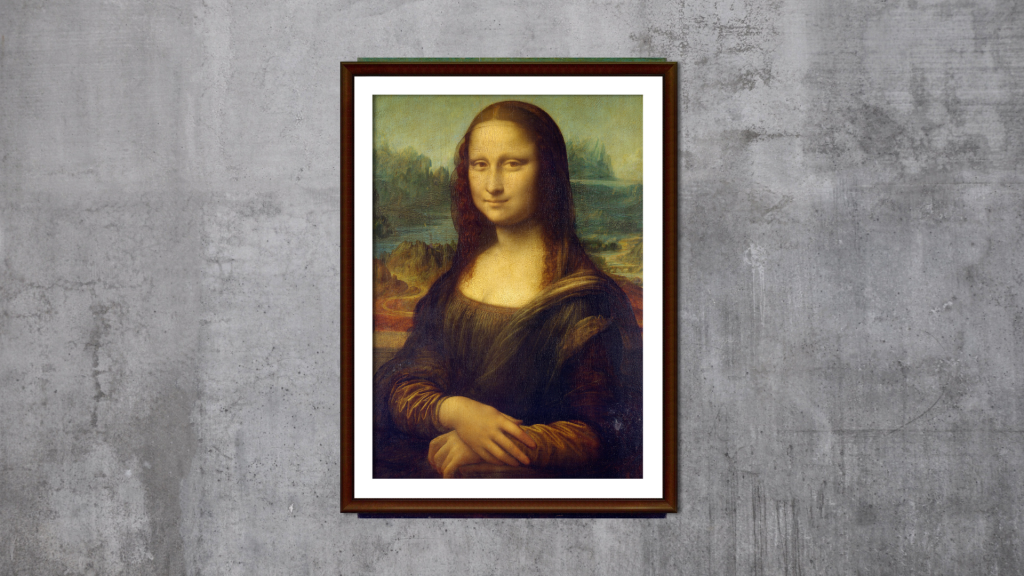Leonardo da Vinci’s Mona Lisa is one of the most iconic works of art in the world. It has been celebrated and studied for centuries, but there still remains some mystery surrounding its creation and meaning. In this post, we’ll explore what exactly makes the Mona Lisa so captivating and why it continues to draw people from around the world. We’ll also uncover some fascinating facts about Leonardo da Vinci’s life and his creative process that make the painting even more remarkable. So grab a cup of coffee, sit back, and join us on this journey into one of history’s greatest masterpieces!
Leonardo da Vinci’s Life and Art
Leonardo da Vinci was born in 1452, the illegitimate son of a Florentine notary and a peasant woman. He grew up in Vinci, a small town in Tuscany, and later apprenticed with the noted artist Andrea del Verrocchio. In 1482, Leonardo left Florence for Milan, where he remained for 17 years. During this time, he painted “The Last Supper” and “Virgin of the Rocks.” He also created plans for numerous inventions, such as the flying machine and a tank.
In 1500, Leonardo returned to Florence. Two years later, he began work on his most famous painting, the Mona Lisa. The identity of the woman in the painting is still a mystery, but Leonardo likely used his own face as a model for the iconic work. The Mona Lisa was unfinished when Leonardo died in 1519. Despite only creating a handful of completed works during his lifetime, Leonardo da Vinci is widely considered one of the greatest artists of all time. His art is characterized by its remarkable realism and use of light and shadow. Da Vinci’s legacy extends beyond his paintings; he is also revered for his scientific discoveries and inventions.
Historical Context of Mona Lisa
The Mona Lisa is one of the world’s most iconic paintings and has been since it was first painted by Leonardo da Vinci in the early 16th century. But what is the history behind this enigmatic work of art? It is thought that the Mona Lisa was painted between 1503 and 1506, and is a portrait of Lisa Gherardini, the wife of Francesco del Giocondo. The painting gets its name from the Italian word “mona”, which means madonna or lady.
However, there is much debate over who the subject of the painting actually is. Some believe that Lisa Gherardini is not the sitter, but instead, it is a self-portrait of Leonardo da Vinci in disguise. This theory is based on the fact that there are some similarities between the Mona Lisa and Leonardo’s other self-portraits.
Whatever the true identity of the subject may be, there is no denying that the Mona Lisa is one of the most famous paintings in history. Over 500 years after it was first painted, it still captures the imagination and continues to be one of art’s greatest mysteries.
Analysis of Mona Lisa
When one looks at the Mona Lisa, one can’t help but be mesmerized by her gaze. It’s as if she is looking right through you, into your soul. But what is she thinking? What is the story behind that famous smile? In this section, we’ll take a closer look at the Mona Lisa and try to unlock some of its mysteries. We’ll examine the painting from different angles, both literal and figurative, in an attempt to better understand Leonardo da Vinci’s enigmatic masterpiece.
Color Palette
da Vinci was fascinated by the way the light played off of different colors and surfaces, and he applied that knowledge to the Mona Lisa. The colors in the painting are very subdued, but they work together to create a sense of harmony. The overall effect is one of serenity and calm. The color palette for the Mona Lisa is made up of mostly earth tones. The main colors are soft white, yellow, green, and blue. These colors are all found in nature, and they work together to create a naturalistic feel. There are also small amounts of pink and red present in the painting, which add a touch of warmth.
Composition and Proportion
When we think of the Mona Lisa, we often think of the enigmatic smile. But there’s so much more to this painting than meets the eye. In fact, a closer look reveals a wealth of hidden symbolism and meaning. One of the most striking features of the Mona Lisa is her composition and proportion. Leonardo da Vinci was a master of both geometry and art, and he used these skills to create a work that is both aesthetically pleasing and mathematically precise.
The Mona Lisa is divided into three distinct sections: the background, the middle ground, and the foreground. The background is made up of mountains, which symbolize strength and stability. The middle ground contains a river, which represents change and movement. And finally, the foreground features the figure of the Mona Lisa herself. Each section is carefully proportioned to create a sense of harmony and balance. This careful planning creates an overall effect that is both calming and mesmerizing. It’s no wonder that the Mona Lisa has been called “the perfect painting.”
Background Landscape and Meaning
When one thinks of Leonardo da Vinci, the first thing that usually comes to mind is his world-famous painting, the Mona Lisa. The Mona Lisa has been endlessly analyzed and debated by art historians for centuries, and there are still many aspects of the painting that remain a mystery.
The first thing to note about the background landscape of the Mona Lisa is that it is very different from other paintings of the time period. Most other Renaissance paintings featured highly detailed and realistic landscapes, while the background in the Mona Lisa is much more abstract. This has led to speculation that Leonardo may have intentionally included some sort of hidden message in the painting.
One theory is that the landscape represents a map of Italy, with various landmarks being represented by different elements in the painting. For example, some believe that Mount Vesuvius is represented by the small hill in the distance, while others believe that it may be a representation of paradise. Another popular theory is that the landscape is actually a self-portrait of Leonardo himself.
Whatever the true meaning behind Leonardo’s enigmatic background landscape may be, it continues to fascinate viewers centuries after it was painted. The next time you look at the Mona Lisa, see if you can spot any hidden meanings in her mysterious smile and mysterious surroundings!
Iconic Smiling Expression
The Mona Lisa is one of the most iconic paintings in the world. The subject of the painting is Lisa Gherardini, the wife of Francesco del Giocondo. The painting is believed to be a portrait of Lisa at the time of her marriage. It has been described as having an “unfathomable smile”. This has led to many theories about why she is smiling. Some believe that she is smiling because she is happy, while others believe that she is actually grinning in a mocking way. Whatever the reason for her smile, it has become one of the most iconic images in art history.
Interpretations of Mona Lisa Over Time
The Mona Lisa has been one of the world’s most recognizable paintings for centuries. But what is the true meaning behind Leonardo da Vinci’s enigmatic masterpiece? Interpretations of the Mona Lisa have varied widely over time, with some viewers seeing her as a symbol of beauty and others perceiving her as a representation of Leonardo’s own feelings of loneliness and isolation.
Some scholars believe that the painting is a portrait of Lisa Gherardini, the wife of Francesco del Giocondo, while others believe that it is a self-portrait of Leonardo himself. Whatever the true meaning behind the Mona Lisa may be, it is clear that this artwork continues to captivate viewers from all walks of life and inspire new interpretations with each passing generation.
Leonardo da Vinci’s Mona Lisa is a timeless masterpiece that continues to captivate and mystify audiences around the world. While much of its allure lies in the ambiguity surrounding it, recent discoveries have provided new insight into this iconic artwork and shed light on some of the mysteries behind it. From its unique painting technique to hidden messages in plain sight, Leonardo da Vinci’s Mona Lisa has been an enduring source of fascination for centuries and will likely remain so for many more.

